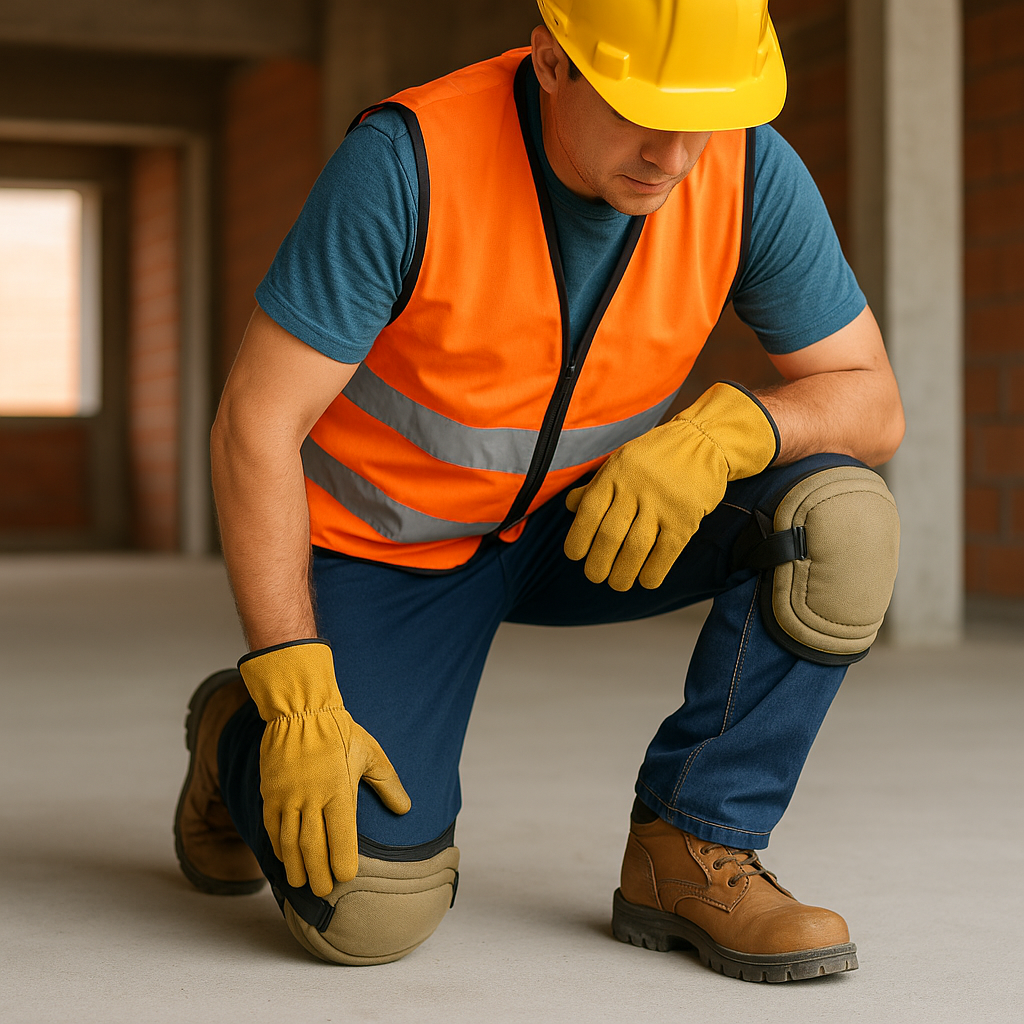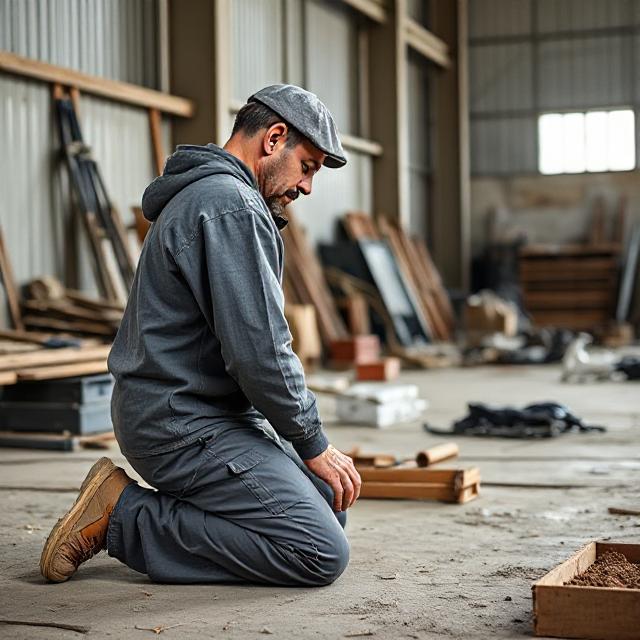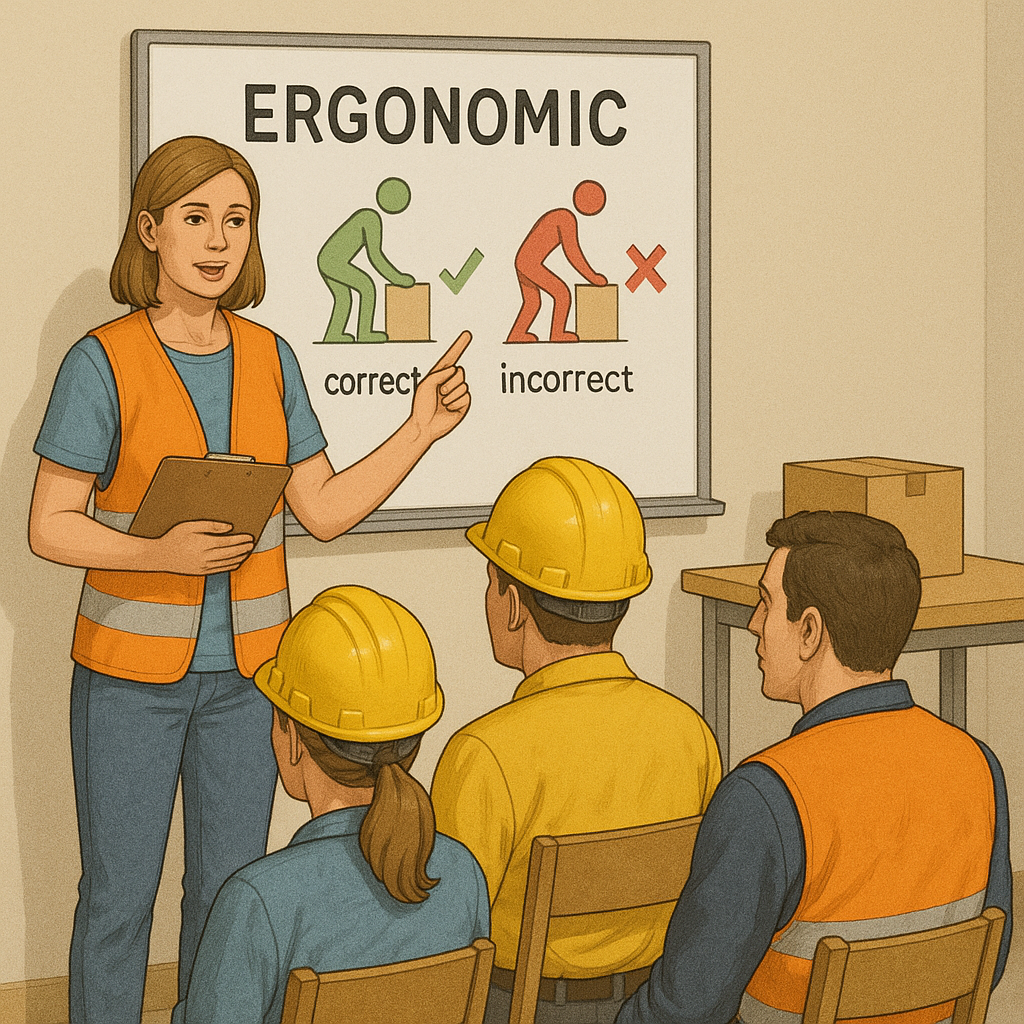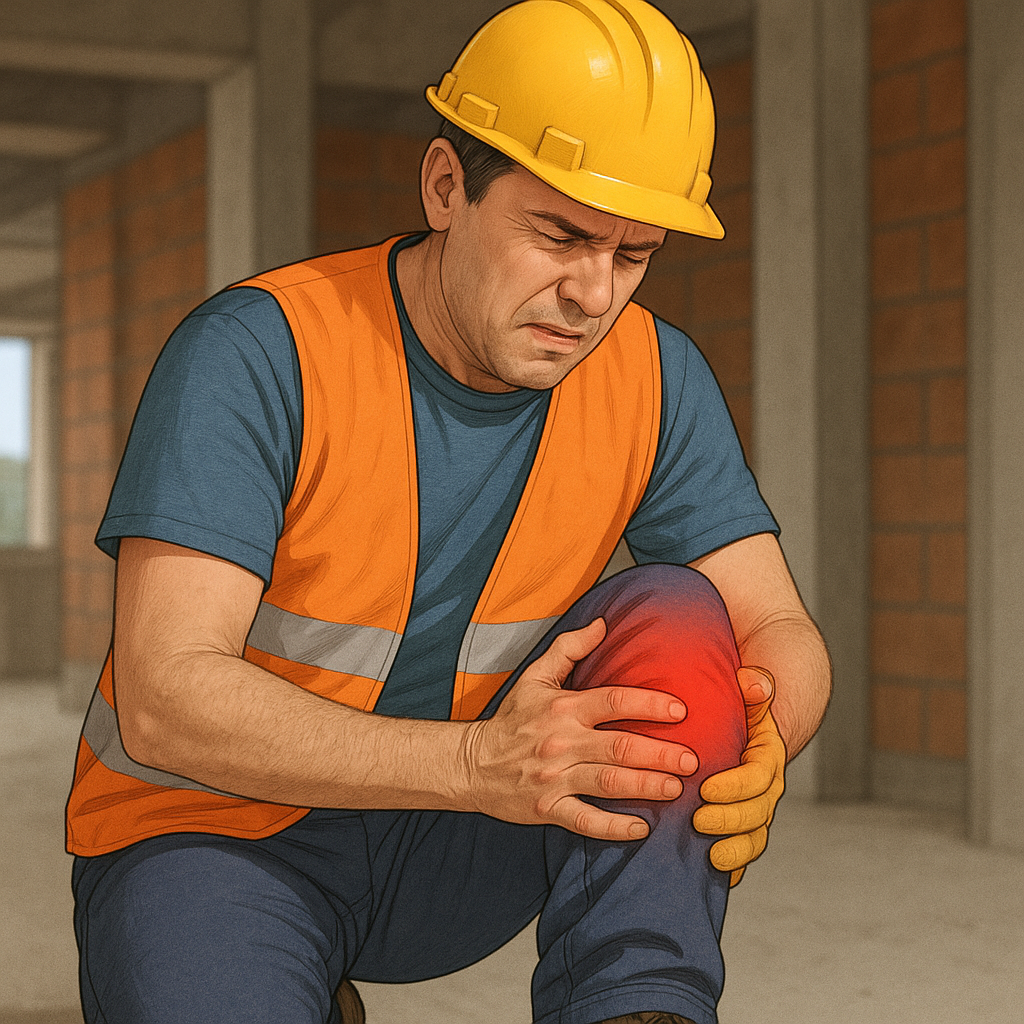Knee Safety in Occupational Health is a crucial yet often overlooked area of workplace well-being. While workers and employers tend to focus on head protection, respiratory hazards, or hand safety, the knees quietly endure constant pressure, strain, and risk of injury.

From construction sites to office desks, maintaining strong and healthy knees is not just a comfort issue—it’s a matter of productivity, injury prevention, and long-term quality of life.
Why Knee Safety in Occupational Health Matters
The knees are one of the most complex joints in the human body, designed to support weight, absorb impact, and allow mobility.
However, this complexity also makes them vulnerable to injuries. Occupational health statistics consistently show that musculoskeletal injuries, particularly those affecting the knees, are among the leading causes of lost workdays worldwide (CDC – Work-Related Musculoskeletal Disorders).
When workers experience knee injuries such as bursitis, tendonitis, or meniscus tears, they face long recovery times and often chronic pain.
In some cases, untreated knee issues can progress to osteoarthritis, a debilitating condition that can permanently reduce mobility.
For organizations, poor attention to knee safety leads to higher absenteeism, compensation claims, and reduced morale. Investing in knee protection is therefore a win-win strategy for both workers and employers.
Common Workplace Risks to Knee Safety
1. Prolonged Kneeling
Jobs such as flooring, roofing, plumbing, and electrical work require workers to kneel for long periods. Direct pressure on the knees without protective gear accelerates joint wear and can lead to bursitis.

2. Heavy Lifting and Carrying
Improper lifting techniques—especially bending at the waist instead of the knees—place excessive stress on the joints. Repeated strain increases the risk of ligament injuries.
3. Repetitive Movements
Frequent squatting, bending, and climbing can fatigue the knees. Occupations in construction, warehousing, and farming are especially at risk.
4. Slips, Trips, and Falls
One misstep can cause sudden trauma to the knees, resulting in fractures, torn ligaments, or cartilage damage. These injuries are common in wet, cluttered, or uneven work environments.
5. Sedentary Work
Surprisingly, office workers also face knee problems. Prolonged sitting weakens the muscles supporting the knees, leading to stiffness and poor circulation. Ergonomic risks extend beyond manual labor.
Best Practices for Knee Safety in Occupational Health
Ergonomic Training
Employers should implement ergonomic training programs that emphasize correct lifting techniques, safe bending practices, and posture awareness.
Workers must learn to lift with their legs, not their backs, and to avoid twisting while carrying heavy loads.

Use of Knee Pads and Cushions
Workers in kneeling-intensive jobs should be provided with PPE like padded knee pads or cushioned mats. This simple measure drastically reduces pressure on the joints and prevents long-term damage.
Strengthening and Conditioning
Encouraging workers to strengthen muscles around the knees—such as quadriceps, hamstrings, and calves—provides added support.
Incorporating workplace wellness programs that include stretching and strengthening exercises can reduce injury rates.
Worksite and Task Design
Employers can redesign tasks to limit excessive kneeling or squatting. Adjustable platforms, long-handled tools, and mechanical lifting aids should be standard equipment in high-risk industries.
Early Reporting and Medical Intervention
Workers should be encouraged to report discomfort early. Minor aches can escalate into chronic injuries if ignored.
Employers should ensure that occupational health staff and first aiders are trained to recognize early warning signs of knee problems.
The Employer’s Responsibility in Knee Safety

Employers have a legal and ethical duty to maintain a safe workplace, which includes protecting musculoskeletal health. Their role includes:
- Conducting ergonomic risk assessments to identify knee-related hazards.
- Providing appropriate PPE such as knee pads, anti-fatigue mats, or supportive footwear.
- Offering wellness initiatives that include physiotherapy or exercise programs.
- Rotating job tasks to reduce repetitive strain.
- Ensuring slip-resistant flooring and clear walkways to minimize fall risks.
A proactive approach demonstrates a commitment to holistic occupational health and contributes to a culture of safety.
Long-Term Impact of Ignoring Knee Safety
Neglecting knee health in occupational settings doesn’t only affect the individual worker—it impacts the entire workplace ecosystem.
Workers sidelined by chronic injuries may require expensive long-term treatment, retraining, or even early retirement. Organizations may face increased insurance premiums, legal claims, and reputational harm.
In contrast, organizations that integrate knee safety into their occupational health programs benefit from lower injury rates, improved worker morale, and stronger retention. Safety is not only compliance—it’s a competitive advantage.
For further guidance, companies can refer to:
- Canadian Centre for Occupational Health and Safety (CCOHS) – practical resources on ergonomics and workplace design.
- Workplace Safety and Insurance Board (WSIB Ontario) – reporting guidelines and injury prevention resources.
- Internal references: Check related OHSE guides on OHSE.ca for additional articles on ergonomics, PPE, and workplace health.
Conclusion
Knee Safety in Occupational Health is not optional—it’s essential. Knees enable workers to move, lift, climb, and perform countless tasks that keep industries running.
By focusing on prevention through ergonomics, PPE, task design, and wellness programs, employers can significantly reduce knee-related injuries. Protecting the knees today ensures healthier workers, safer workplaces, and stronger businesses tomorrow.
Knee Safety in Occupational Health must be at the center of every safety program.

No comments yet